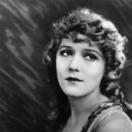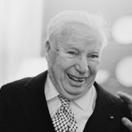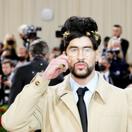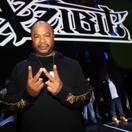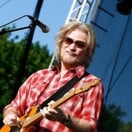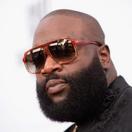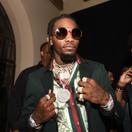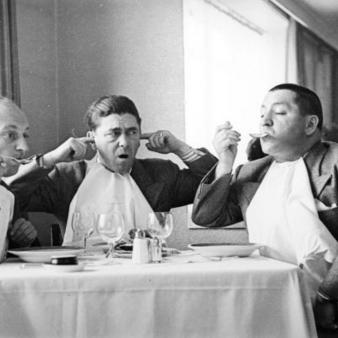- Category:
- Richest Celebrities › Richest Comedians
- Net Worth:
- $150 Thousand
- Birthdate:
- Jan 18, 1892 - Aug 7, 1957 (65 years old)
- Birthplace:
- Harlem
- Gender:
- Male
- Height:
- 6 ft (1.85 m)
- Profession:
- Actor, Comedian
- Nationality:
- United States of America
What was Oliver Hardy's Net Worth?
Oliver Hardy was a comic actor who had a net worth of $150 thousand at the time of his death in 1957. Oliver Hardy died on August 7, 1957 at 65 years old from cerebral thrombosis. Unfortunately, Oliver and Stan Laurel never really were able to benefit financially from their massive success. At the end of his life in the early 1960s, Stan Laurel was living in a cheap Santa Monica apartment out of necessity. The duo claimed that much of their money went to producers and managers who technically owned their image. For Stan Laurel, he also lost much of his fortune in several divorces.
Oliver was best known as one half of the popular motion picture comedy duo Laurel and Hardy. With his partner Stan Laurel, he appeared in a combined 107 short and feature films between 1927 and 1951. Among their most famous titles are "The Battle of the Century," "Big Business," "Sons of the Desert," "Babes in Toyland," and "The Music Box," the lattermost of which won the inaugural Academy Award for Best Live Action Short Film.
Early Life and Education
Oliver Hardy was born as Norvell Hardy on January 18, 1892 in Harlem, Georgia as the youngest of five children of Emily and Oliver. His father was a Confederate Army veteran of the Civil War who ran a cotton plantation, and later, served as the tax collector for Columbia County, Georgia. He passed away when Hardy was less than a year old. Growing up, Hardy was often a problem child; in the fifth grade, he was sent to Georgia Military College, and at the age of 13 was sent to Young Harris College. With meager interest in formal education, he was drawn to music and theater. Hardy ended up running away from his boarding school near Atlanta to join a theatrical group. Later, he signed up for a couple of courses at the University of Georgia just so he could play football.
Career Beginnings in Film
Hardy first got involved with film in 1910 when he became the manager, projectionist, ticket taker, and janitor of a new motion picture theater in Milledgeville, Georgia. He grew obsessed with the nascent film industry and believed he could do a better job than the actors he saw on screen. Encouraged by a friend, Hardy moved to Jacksonville, Florida in 1913 and worked for the Lubin Manufacturing Company, a film production company. At night, he worked as a cabaret and vaudeville singer. In 1914, Hardy made his first film for Lubin, entitled "Outwitting Dad"; he was billed as Babe Hardy. By the next year, he had made around 50 short one-reel films for the company. Hardy subsequently moved to New York, where he made films for Pathé, Casino, and Edison Studios. Back in Jacksonville, he made films for the Vim Comedy Company, and then for King Bee, which purchased Vim. Hardy became known during this time for playing villains opposite Billy West, who imitated Charlie Chaplin. He also directed a handful of his own short films.
Hardy moved to Los Angeles, California in 1917 and began doing freelance work for various Hollywood studios. He was rejected for enlistment during World War I due to his heavy size. Between 1918 and 1923, Hardy made over 40 films for Vitagraph, primarily costarring Larry Semon. Hardy also appeared in "The Lucky Dog," his first film to feature Stan Laurel; however, the two were not yet a comedy duo. In 1924, Hardy started working at Hal Roach Studios in the popular "Our Gang" films. The year after that, he starred in "The Wizard of Oz" and "Yes, Yes, Nanette!," the latter of which was co-directed by Laurel. Hardy also appeared in many films with Clyde Cooke and Bobby Ray. In 1926, he acted alongside Cooke in "Wandering Papas," another Laurel-directed short.
Laurel and Hardy
After having worked together on several occasions prior, Laurel and Hardy became an official comedy duo act in 1927 when they starred in the silent short "Putting Pants on Philip" for Hal Roach Studios. They were subsequently in such films as "The Battle of the Century," "Should Married Men Go Home?," and "Two Tars." In 1929, Laurel and Hardy made their first talkie, "Unaccustomed As We Are." That was followed by "Berth Marks," "Blotto," "Brats," "Another Fine Mess," and "Be Big!," among dozens of other titles. The duo also appeared in their first feature films, "Hollywood Revue of 1929" and the Technicolor musical "The Rogue Song," and starred in the feature "Pardon Us." In 1932, Laurel and Hardy starred in one of their most famous films, "The Music Box," which focuses on their laborious attempt to move a piano up a long flight of stairs. The film won the inaugural Academy Award for Best Live Action Short Film. They followed that with the popular feature films "Sons of the Desert" and "Babes in Toyland." Later in the 1930s, Laurel and Hardy were lent to General Service Studios to make "The Flying Deuces." They also made their final films for Hal Roach, "A Chump at Oxford" and "Saps at Sea."
In 1941, Laurel and Hardy signed with 20th Century Fox, and the year after that signed a two-picture deal with MGM. Initially, the duo only acted as hired guns in the studios' B-movies, but became so successful that they were soon given more creative control and screen presence. During the World War II years, Laurel and Hardy made eight feature films, including "Air Raid Wardens," "Jitterbugs," "The Big Noise," and "Nothing But Trouble." After the war, the duo embarked on a six-week tour of the United Kingdom, which was so successful that they expanded the tour to include stops in France, Belgium, and Scandinavia. In Europe, Laurel and Hardy made their final film together, 1951's "Atoll K." The duo continued making some appearances after that, including on live television broadcasts of the BBC program "Face the Music" and the NBC program "This is Your Life." Laurel and Hardy ended their career as a comedy duo having appeared in a total of 107 films.
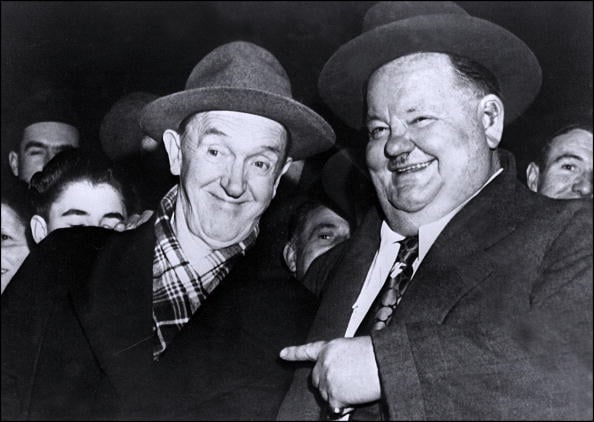
Getty Images
Later Films Without Laurel
Hardy made two notable films without Laurel late in his career. The first was 1939's "Zenobia," in which he starred as a Mississippi country doctor who gets followed around by the circus elephant he healed. A decade later, Hardy had a supporting role in the Western "The Fighting Kentuckian," starring his good friend John Wayne.
Personal Life and Death
In 1913, Hardy wed his first wife, pianist Madelyn Saloshin. They separated in 1919 before getting officially divorced in late 1921. Hardy subsequently married actress Myrtle Reeves, whom he divorced in 1937 after an unhappy marriage. His third and final wife was Virginia Lucille Jones, to whom he was blissfully wed from 1940 until his passing.
Significantly overweight, Hardy had a heart attack in 1954 that made him realize he needed to attend to his health. Consequently, he lost over 150 pounds in just a few months. However, in 1956, Hardy had a major stroke that he never recovered from. After suffering two more strokes in August of 1957, he went into a coma and passed away. He was 65 years of age.



